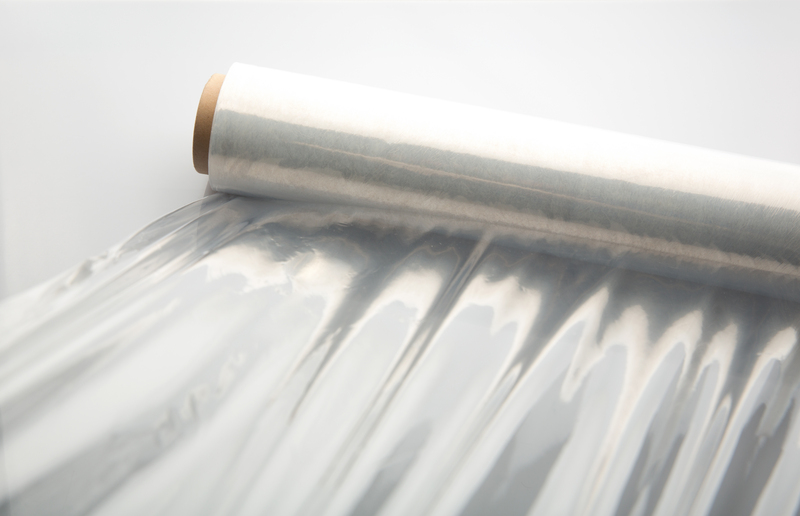Top Tips for Mould-Free Window Sills
Posted on 03/09/2025
Top Tips for Mould-Free Window Sills
When it comes to creating a healthy home environment, keeping your window sills free from mould is an important concern. Mould not only looks unattractive but also poses health risks and can damage surfaces and window structures. This comprehensive guide will show you how to keep your window sills mould-free with expert tips, proven cleaning methods, and simple prevention strategies.

Understanding the Risks: Why Do Window Sills Get Mould?
Before addressing how to prevent or remove mould, it's vital to understand why window sills are especially vulnerable. Moisture, condensation, poor ventilation, and organic debris provide the perfect breeding ground for fungi. When left unchecked, even the cleanest home can experience issues with mould growth on window sills.
- Condensation: Fluctuating temperatures indoors and outdoors cause windows to sweat, leaving water droplets on sills and frames.
- Humidity: High humidity, especially in kitchens and bathrooms, increases the risk of mould development.
- Poor Air Circulation: Stagnant air near your windows allows moisture to settle and encourages spores to thrive.
- Organic Debris: Dust, dirt, or the remains of insects can provide nourishment for mould spores.
Health Risks Associated with Mouldy Window Sills
Mould issues aren't just an eyesore. Prolonged exposure to mould around window sills can lead to:
- Allergic reactions (sneezing, coughing, or itchy eyes)
- Respiratory problems, especially for those with asthma or weakened immune systems
- Unpleasant odours and poor over-all indoor air quality
It's crucial to tackle mould growth on window sills as soon as it's noticed, both to protect your health and your property.
Essential Cleaning Tips for Mould-Free Window Sills
1. Prompt Removal of Visible Mould
If you spot any black, green or white fuzzy patches, act quickly. Here's an efficient two-step cleaning process:
- Wear Protective Gear: Always wear gloves and, if possible, a mask to avoid inhaling spores.
-
Mix a Cleaning Solution:
- Combine equal parts of white vinegar and water, or use a mild anti-mould commercial product.
- For stubborn patches, a diluted bleach solution (1 part bleach to 10 parts water) can also be effective.
-
Scrub Away the Mould:
- Use a soft-bristled brush or sponge to gently scrub the window sill surface.
- Pay extra attention to corners and crevices, as mould often hides in hard-to-reach areas.
-
Wipe and Dry:
- After scrubbing, wipe the sill with a clean, damp cloth to remove any leftover solution.
- Immediately dry with a paper towel or soft cloth to prevent moisture remaining on the surface.
Pro Tip:
Never mix vinegar and bleach, as this can release dangerous chlorine gas. Stick to one cleaning product at a time and rinse surfaces thoroughly between applications.
Preventing Mould Growth on Window Sills: Practical Strategies
While regular cleaning helps, prevention is always better. Follow these practical tips for preventing mould on window sills:
- Keep Window Sills Dry: After showers, cooking, or rainy weather, always check and wipe down your window sills.
- Improve Airflow: Open windows when possible or use fans to keep air circulating, especially in high-moisture rooms.
- Use a Dehumidifier: In persistently humid areas, a dehumidifier can pull excess moisture from the air and significantly reduce mould risk.
- Address Leaks Promptly: Repair any leaks from windows, sashes, or exterior walls to stop water from seeping in.
- Clean Regularly: Dust and wipe down window frames and sills weekly to remove organic particles that fuel mould growth.
Choose the Right Materials for Mould-Resistant Window Sills
Not all window sills are equally susceptible to mould. Wooden sills, for example, can absorb water and harbour mould more than plastic or metal.
- Opt for Treated Materials: If replacing or upgrading, choose window sills with anti-mould coatings or made from moisture-resistant PVC or stone.
- Seal Wooden Sills: Use a top-quality wood sealant or paint to provide a protective barrier against moisture absorption.
Seasonal Maintenance for Mould-Free Window Sills
Just as you spruce up your home during spring cleaning or prepare for winter, window sill maintenance should be seasonal:
- Spring: Check for winter water damage, leaks, and clean accumulated grime on sills and frames.
- Summer: Use this time to repaint or reseal wooden sills in dry weather.
- Autumn: Clear away fallen leaves and debris from exterior window ledges and sills.
- Winter: Monitor for condensation build-up due to interior heating and exterior cold.
Natural Solutions for a Mould-Free Environment
Chemicals aren't the only answer. For those seeking eco-friendly approaches, several natural remedies can help keep window sills free from mould:
- White Vinegar: Vinegar is highly acidic and naturally inhibits mould growth. Spray diluted vinegar directly onto affected areas and allow it to sit before wiping away.
- Baking Soda: This gentle abrasive can help scrub away spores while neutralising odours.
- Essential Oils: Oils like tea tree or eucalyptus are known for their antifungal properties. Add several drops to your cleaning solution for an added mould-repellent boost (always spot test first!)
Expert Tips: Best Practices for Mould Prevention Around Windows
1. Ventilate, Ventilate, Ventilate
Good airflow is your top defence. Open windows daily to let fresh air circulate, especially after showers, cooking, or drying clothes indoors.
2. Warm, Dry Air Is Best
If you live in a colder climate, keeping the air slightly warm and dry helps discourage condensation on your glass panes and sills.
3. Invest in Double-Glazed or Insulated Windows
Modern, insulated windows reduce internal temperature differences, lowering condensation and ultimately keeping sills mould-free.
4. Use Moisture Eliminators
Simple moisture absorbers, such as silica gel or calcium chloride containers, are great for high-risk areas. Place them on the sill or nearby for maximum effect.
How to Deal with Persistent Mould Problems
Do you find that mould keeps recurring on your window sills despite your best efforts? If so, the issue could be linked to deeper structural problems or persistent leaks.
- Check Sealants: Old, cracked window caulking can admit water and moisture. Reseal as needed to keep the elements out.
- Assess Ventilation: Consider installing extractor fans, especially in regularly damp rooms like bathrooms and kitchens.
- Investigate for Hidden Leaks: Moisture may be entering from areas nearby, such as roofs, gutters, or wall cavities.
- Consult a Specialist: If mould returns after thorough cleaning and repairs, you may need professional help. Persistent mould can indicate hidden water damage or larger structural concerns.
Mildew Prevention vs. Mould Removal: Know the Difference
For long-term mould-free window sills, it's essential to distinguish between ongoing prevention and one-time cleaning. Regular dusting, reducing moisture, and using correct materials can help prevent mould from ever forming, whereas deep cleaning removes established problems. Combining both approaches will ensure your home stays healthy, fresh, and beautiful year-round.

FAQs: Keeping Your Window Sills Mould-Free
-
Q: How often should I check my window sills for mould?
A: Monthly checks are recommended, especially in damp months. More frequent inspections may be necessary in bathrooms and kitchens. -
Q: Will painting over mould fix the problem?
A: No. Paint may temporarily conceal visible spores, but unless mould is removed and the area fully dried, it will return and may eventually cause paint to bubble or peel. -
Q: Does opening windows make mould worse?
A: Generally, increased airflow helps prevent mould, but if it's raining or humid outside, keep windows closed until drier conditions return. -
Q: Are there long-lasting sprays for mould prevention?
A: Some commercial products claim to provide residual protection. Always use as directed and do an inconspicuous spot test first.
Conclusion: Enjoy Clean, Mould-Free Window Sills Year-Round!
By following these expert tips and prevention strategies, you can keep your window sills mould-free and maintain a healthier home environment. Regular cleaning, improving ventilation, managing moisture levels, and staying vigilant year-round are key to success. Whether you use natural solutions or commercial cleaners, remember that prompt action and ongoing maintenance are your best defences against mould growth on window sills.
For more household tips and cleaning advice, bookmark this article and share it with family or friends who need help keeping their windows pristine and mould-free!





